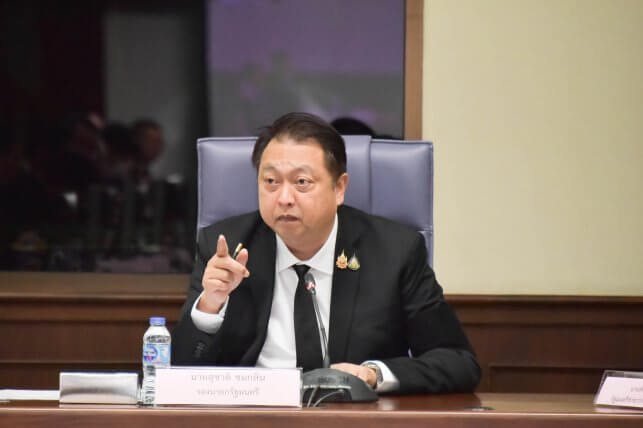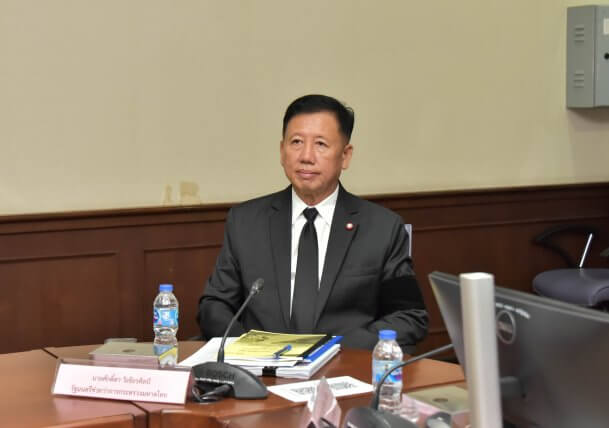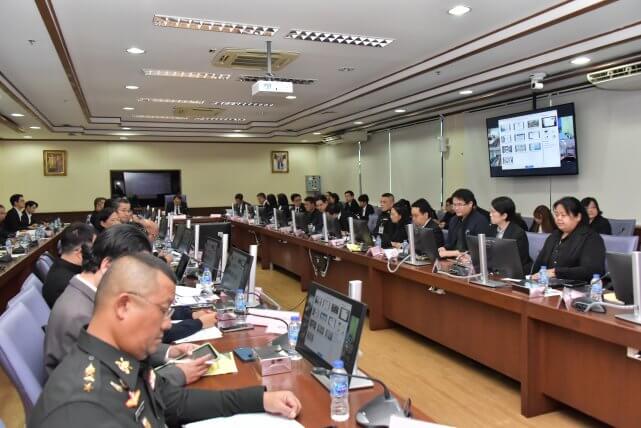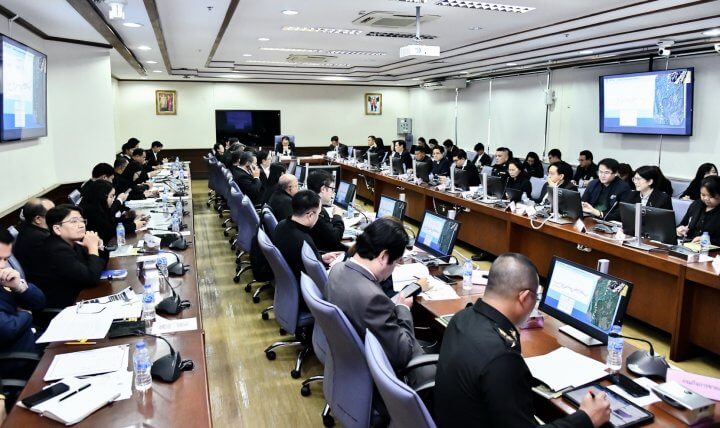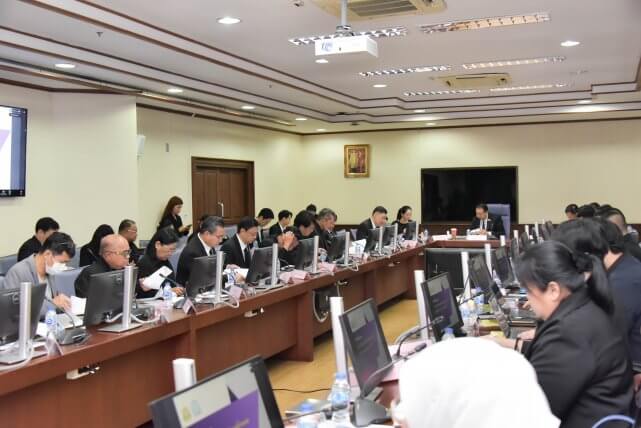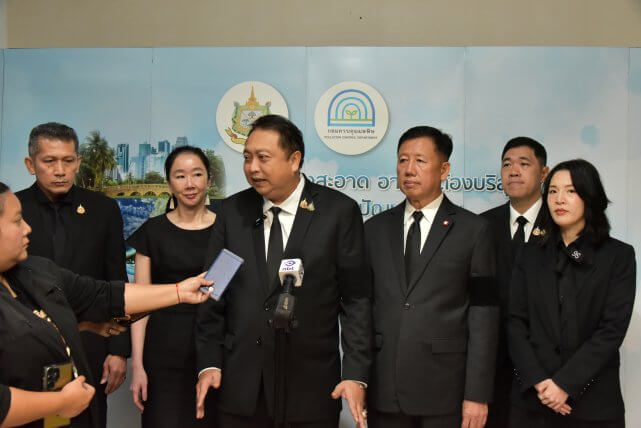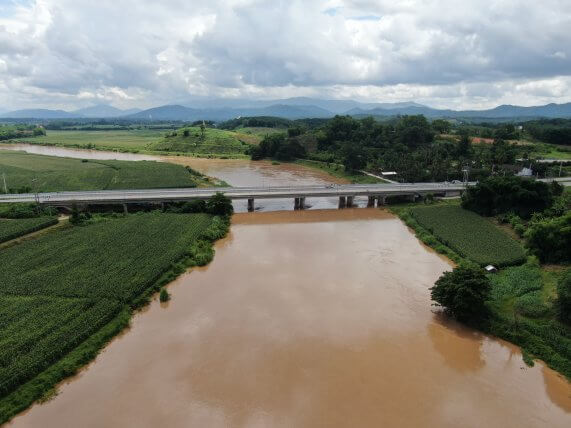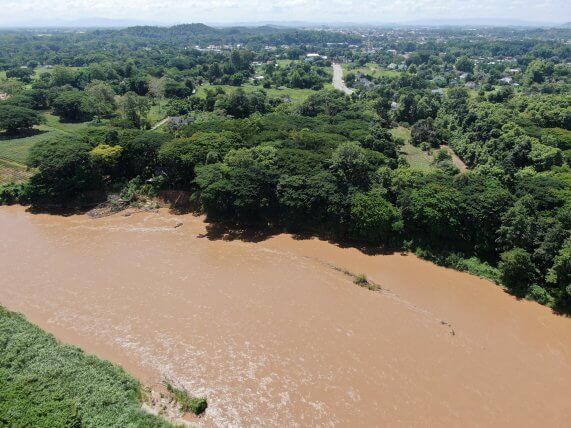
On 13 November 2025, Mr. Suchart Chomklin, Deputy Prime Minister and Minister of Natural Resources and Environment, chaired the meeting of the Sub-committee on Driving Solutions to Surface Water Quality Problems. The meeting was attended by Mr. Sakda Vicheansil, Deputy Minister of the Interior and Vice-Chair of the Sub-committee, together with 31 relevant agencies. The meeting addressed arsenic contamination in the Kok River, as well as the Sai, Mekong, and Salawin Rivers. The Government has urgently intervened, conducted on-site inspections, and engaged with local communities, while also establishing three working groups to prepare long-term water crisis response plans.
Mr. Suchart stated that this meeting was convened in response to the concern of Prime Minister Anutin Charnvirakul for communities affected by mining activities in neighboring countries. Monitoring has detected contaminated runoff flowing into the Kok, Sai, Ruak Rivers, and extending to the Salawin River. During the meeting, relevant agencies reported continuous water quality monitoring conducted by the Pollution Control Department since March 2025. Results from the 12th round of sampling (September 2025) showed that arsenic concentrations in the Kok, Ruak, and Mekong Rivers remain within standard limits. However, in the Sai River, arsenic levels exceeded standards, ranging from 0.015–0.017 mg/L.
Regarding the inspection of aquatic animals and agricultural products, the Ministry of Agriculture and Cooperatives reported that the test results for arsenic, mercury, lead, and cadmium in aquatic animal products and plant samples from Chiang Mai and Chiang Rai Provinces were found to be within the acceptable standards.
Regarding public health monitoring, the Ministry of Public Health assessed the risk of 2,337 people residing in high-risk areas, and found that 362 individuals had potential exposure to arsenic and underwent medical examinations. Seven individuals were found to have total arsenic levels in urine exceeding the reference value, all of whom were farmers. Subsequent health examinations and repeat urine testing showed that total arsenic levels returned to normal in six individuals, while one individual remained above the reference level and requires further investigation to identify potential exposure sources, such as the use of pesticides.
According to Thailand’s surface water quality standard, arsenic must not exceed 0.01 mg/L, a threshold that has been in use for many years. Meanwhile, neighboring countries apply a standard of 0.05 mg/L, recently adopted from Japanese guidelines. All relevant agencies must jointly review and appropriately apply these standards. In addition, all agencies were instructed to promptly communicate and provide clear information to the public on matters related to fish, crops, and soil. Regarding the inspection of village water supply systems along the Kok River, initial results detected arsenic contamination in four groundwater wells. The Department of Groundwater Resources subsequently conducted well purging, and follow-up testing confirmed that the contamination was no longer present. All government agencies must provide consistent information to local communities to prevent public panic. The Ministry of Public Health should mobilize Village Health Volunteers to support outreach and awareness efforts.
As for mitigation measures, the Ministry of Natural Resources and Environment, through the Department of Water Resources, must identify additional surface water sources for drinking water production to prepare for future crises. The Provincial Waterworks Authority must explore and prepare supplementary water sources. Regarding negotiations with neighboring countries, the Ministry of Foreign Affairs will lead discussions and information exchange. Neighboring countries must comply with international standards for pollution control before discharging water from mining areas.
On the issue of sediment traps, while consistent with international practice, local communities remain concerned regarding the disposal of trapped sediment. To reach consensus on sediment management, a committee has been established, chaired by the Director-General of the Department of Water Resources, bringing together experts who both support and oppose the sediment trap concept to debate and develop recommendations without dismissing or blocking these approaches.
Mr. Suchart stressed that this issue is not political, but a challenge that requires collective effort. He called for experts, academic institutions, and civil servants to collaborate so that the ultimate beneficiaries will be the people.
To urgently address arsenic contamination in the Kok River, as well as the Sai, Mekong, and Salawin Rivers, three working groups were established under the Sub-committee on Driving Solutions to Surface Water Quality Problems: (1) the Working Group on International Cooperation for Surface Water Quality Solutions; (2) the Working Group on Environmental Monitoring and Health Impacts in the Kok River Basin and its tributaries, the Sai River, the Mekong River, and the Salawin River; and (3) the Working Group on Assessing the Suitability and Management Approaches of Replacement Water Sources and Measures to Address Water Quality Problems in Thailand’s 22 major river basins and the Mekong River. These working groups will develop mechanisms and accelerated solutions to ensure more rapid and effective responses.

